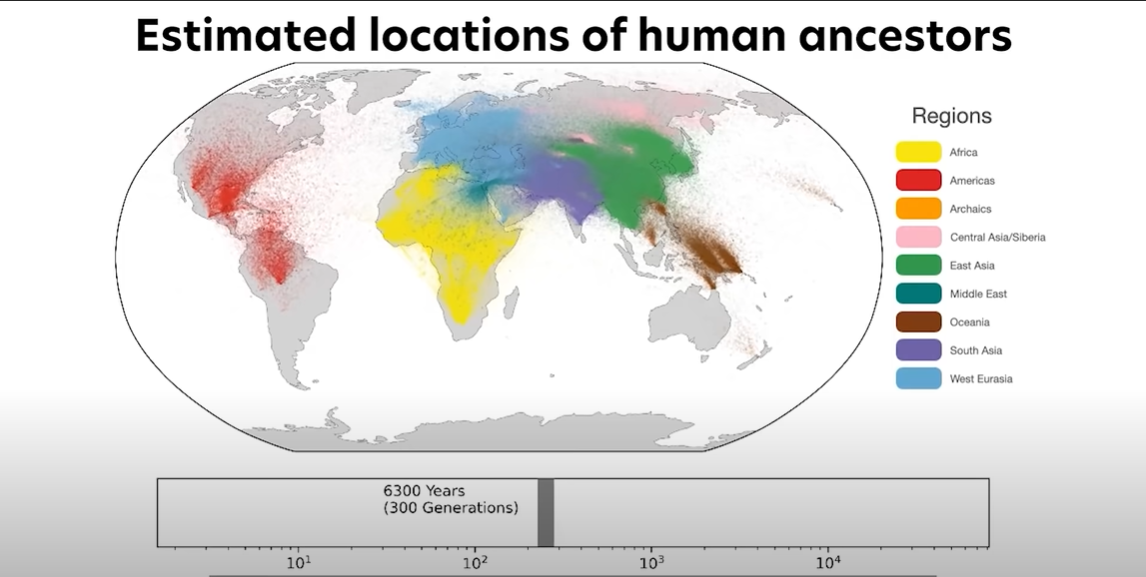Then
The largest family tree in the history of human genetic diversity, it reveals how individuals from all over the world are related and allows us to know the major events in human history, their chronology and geographical location.
This new legacy network that predicts common ancestry and recovers important events such as human migration from Africa has been developed by a team led by the University of Oxford (United Kingdom) and published in Methodology.
“We have basically created a large family tree, a legacy for all of humanity, which has modeled as accurately as possible the history that created all the genetic variations we see in humans today.”Yan Wong, one of the authors of the Big Data Institute and Report at Oxford University, explained.
He explained how this lineage, at all points in the gene, is related to each person’s gene sequence and all others.
The study compiled data on modern and ancient human genes from eight databases and included 3,609 unique genetic sequences from 215 populations. Ancient genes include specimens found around the world between 1,000 and 100,000 years old.
Algorithms have predicted the location of common ancestors in evolutionary trees to explain the patterns of genetic variation, resulting in a network of nearly 27 million ancestors.
In recent decades, genetic data have been generated on hundreds of thousands of people, including thousands of prehistoric people. Raises the possibility of detecting the origin of genetic diversityBut the big challenge was to integrate genetic sequences from multiple databases and develop algorithms capable of handling large amounts of data.

Oxford researchers used a new method that could easily combine data from multiple sources and sizes to accommodate millions of genetic sequences.
Individual genetic parts are inherited only from the father or mother, so the lineage of each point of the gene can be considered as a tree.
The set of trees, is called “Tree row” Or “Ancestor Restoration Map”Genetic variation connects genetic regions over time with the ancestors who first appeared.
Anthony Wilder, the lead author of the study, explained that the genes of our ancestors were reconstructed and used to create a network of vast relationships, after which it was possible to estimate when and where those ancestors lived.
The team plans to enrich the genealogy map as more genetic data become available.
Wong considered that this study would lay the foundation for the next generation of DNA sequences, which would allow increasingly accurate trees to come together on a single and integrated map that illustrates the lineage of all human genetic variants that exist today.
Current research focuses on humans, but the method used is and may be valid for most organisms “By separating the real connections between genetic regions and diseases that are particularly beneficial to medical genetics from the misconceptions that come from our shared ancestral history.”.
EFE



:quality(85)/cloudfront-us-east-1.images.arcpublishing.com/infobae/SMPW7M5BQFERBOQUPJXKCOKARY.jpg)
:quality(85)/cloudfront-us-east-1.images.arcpublishing.com/infobae/NP5NEZXMZFGNLBHNEQJHPJVMKM.jpg)
